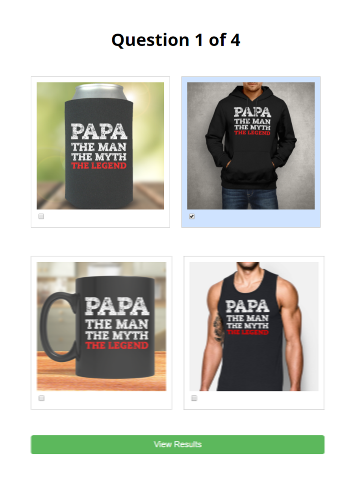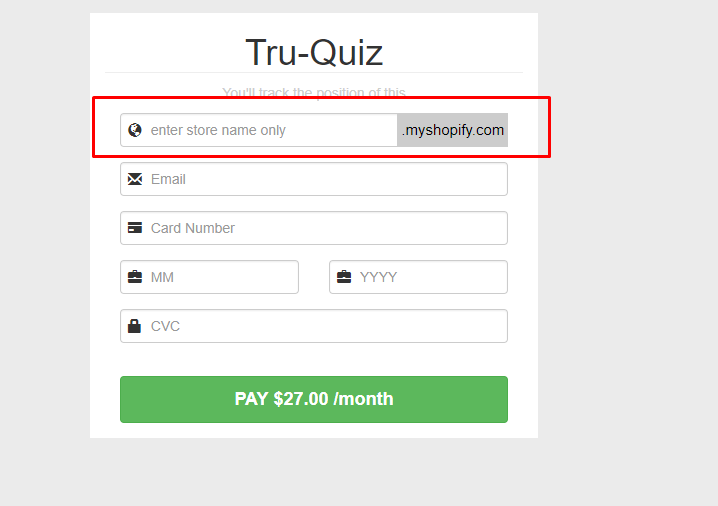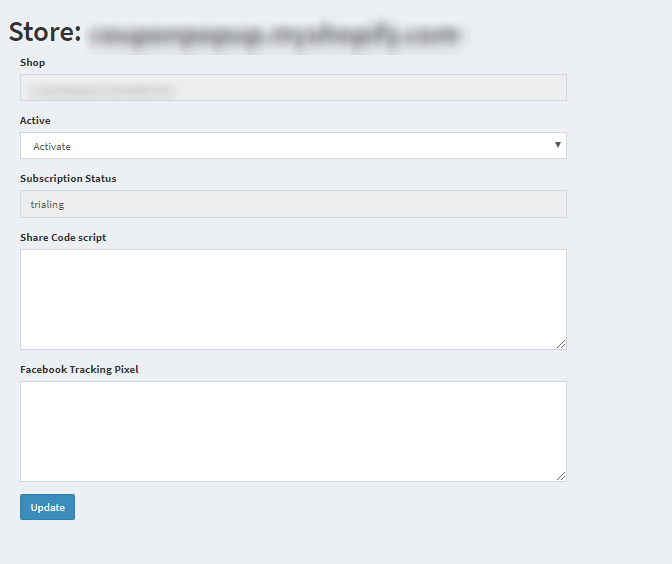Subscription Based Custom Shopify App Development: Truquiz

Shopify is one of the most rapidly evolving eCommerce CMS with hundreds of new merchants signing up every week to launch their eCommerce stores. Shopify’s development community is expanding at a steady pace as well, with developers stepping up to exploit Shopify’s APIs for custom Shopify app development.
Shopify itself supports the app development practice by providing tools and software development kits (SDKs). These, along with Shopify REST API allows developers to integrate their custom-built web applications with Shopify as custom applications.
Using Shopify apps, merchants can easily enhance the capabilities of the Shopify stores and add new features without digging into too many technicalities.
The Brihaspati Infotech has been providing Shopify Development Services for the past 7+ years to clients all around the globe. With this article, we attempt to share:
- 1. Our experience developing one of the numerous Shopify apps we have built and how it helped merchants enhance their store.
- 2. The sales model of the app.
- 3. How we set up Stripe based recurring subscription model for app users.
- 4. What challenges we faced while developing the app.
By the end of this article, we aim to provide insights to clients about the Shopify app development process and potential ways how clients can monetize their Shopify apps effectively.
Truquiz: Our experience with custom Shopify app development
Over the past 7 years, we have assisted numerous clients in building and launching Shopify apps to enhance various sections of a Shopify store. One such instance was when we helped developed Truquiz – a Shopify app that helped merchants setup product quizzes to show the right product to the right audience.
With Tru-quiz, Shopify based merchants can set up a product quiz on their website’s landing page by completing a handful of steps that include:
- Setting up a quiz title
- Setup a short description for the quiz.
- Create a sequence of questions (not more than five).
- Setup image answers.
Based on the choice made by the customer, the quiz redirects them to a specific product page (pre-defined by the merchant in the app backend). This allows the merchant to set up a refined and engaging user experience where the customer himself makes a selection based on his interest and the website further directs him to relevant products.
The Sales strategy of the app
In Shopify app owners can publish two type of applications:
- 1. Public apps: These work with multiple stores, can be listed in the Shopify App Store, and have access to most APIs.
- 2. Private apps: These apps work with one store, are not listed in the Shopify App Store, cannot be embedded into the Shopify Admin panel, and have limited access to the APIs.
For Public apps, app developers/owners will have to sign up for a Shopify partner program. Additionally, once the app is published on the Shopify app store, Shopify keeps 20% of the earnings as well.
However, there is a third way around. By choosing not to host the app on the Shopify app store, application owners can manually host the app and deploy it to merchant websites without the need for the Shopify app store.
While there is certainly an added benefit of hosting the app on the Shopify app store and gaining more exposure, it works equally well the other way around – given that there is dedicated marketing done for the app to attract the relevant audience.
Setting up the recurring subscription model
Another key feature of the Tru-quiz app was selling the app based on a recurring subscription model. We utilized Stripe payment API to set up the payment mechanism for the app and deployed a CRON job to review all active subscriptions.
The CRON script was responsible to trigger an automatic payment request from Stripe to the subscriber’s bank account for subscription renewal.
Our system kept track of the response from the bank – Payment successful, Payment failed, etc. and fetched that information into a custom built Super admin dashboard for the app owner to review.
The Super admin dashboard also allowed the app admin to manage the subscription of a user, see the status of the subscription, and even capture the facebook tracking pixel or sharing script being used by a subscriber.
The back-end admin section was tailor built using YII framework and is robust/scalable to its core. With supreme control on all active subscriptions, the app owner can transparently track subscription data as well as provide effectual support to any of their clients.
Challenges we faced
The only challenge we faced on the development front was to manage the free trials of the users. As the app was deployed directly to the client websites as soon as they sign up for the free trial period, it turned out to be a precarious task to keep track of users who have signed up for a free trial and stop them from re-exploiting the trial period again and again.
This was eventually accomplished by saving the store data of all free trial signups and matching the new signup requests by the existing data. If no match was found then the system authorized the Free trial sign up, otherwise, the subscriber was directly sent to the payment page.
Conclusion
Shopify officially maintains various different libraries for its API that the developers can exploit to launch Shopify applications. The most widely used ones include:
This flexibility opens up the possibilities for entrepreneurs and merchants to think of custom solutions for Shopify powered stores and for Shopify developers to create custom apps without any technical restriction of development language.
Are you looking to enhance your Shopify store with Shopify custom app development? Then hire best Shopify development team offshore and book your free consultation today.





